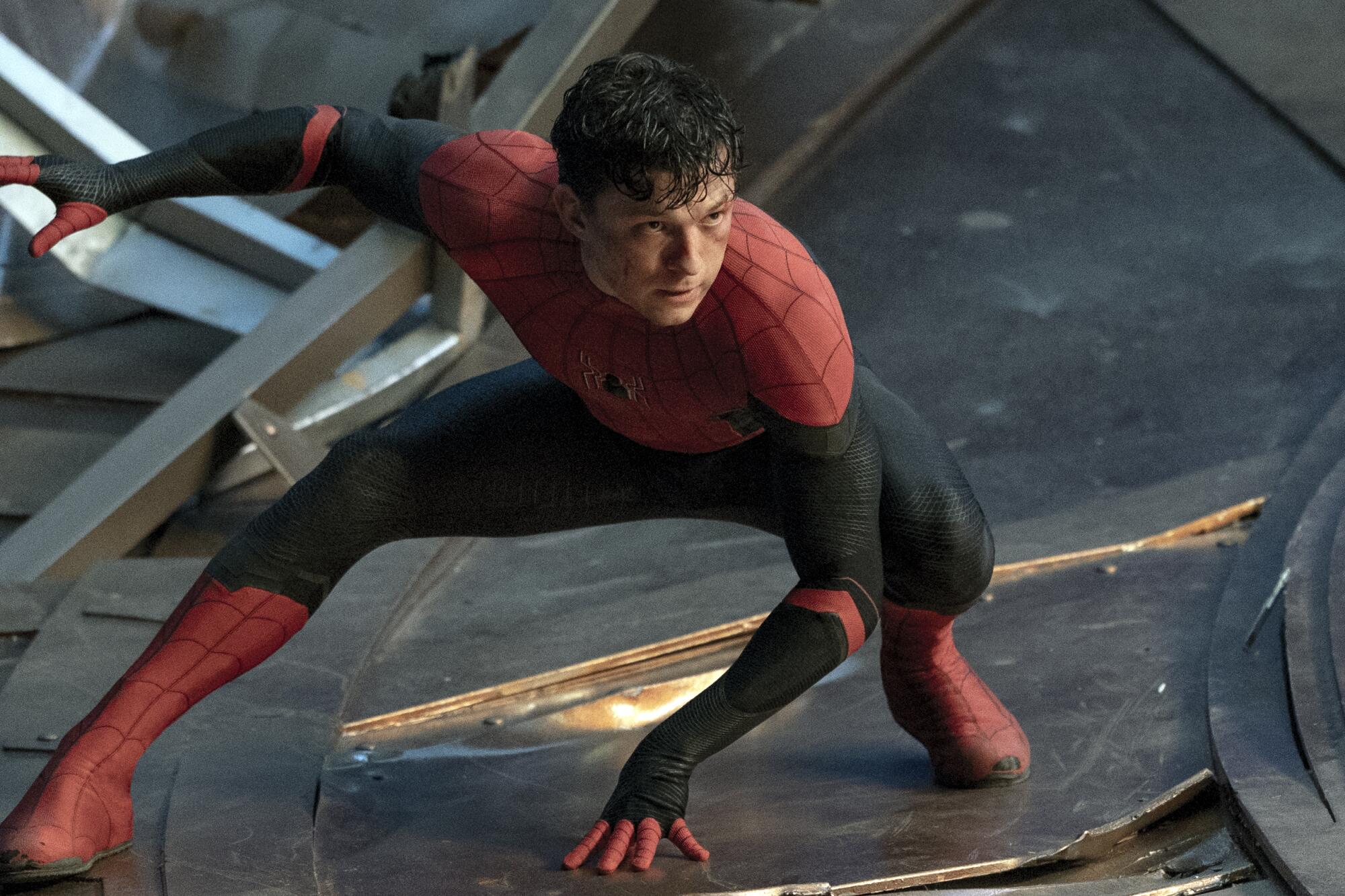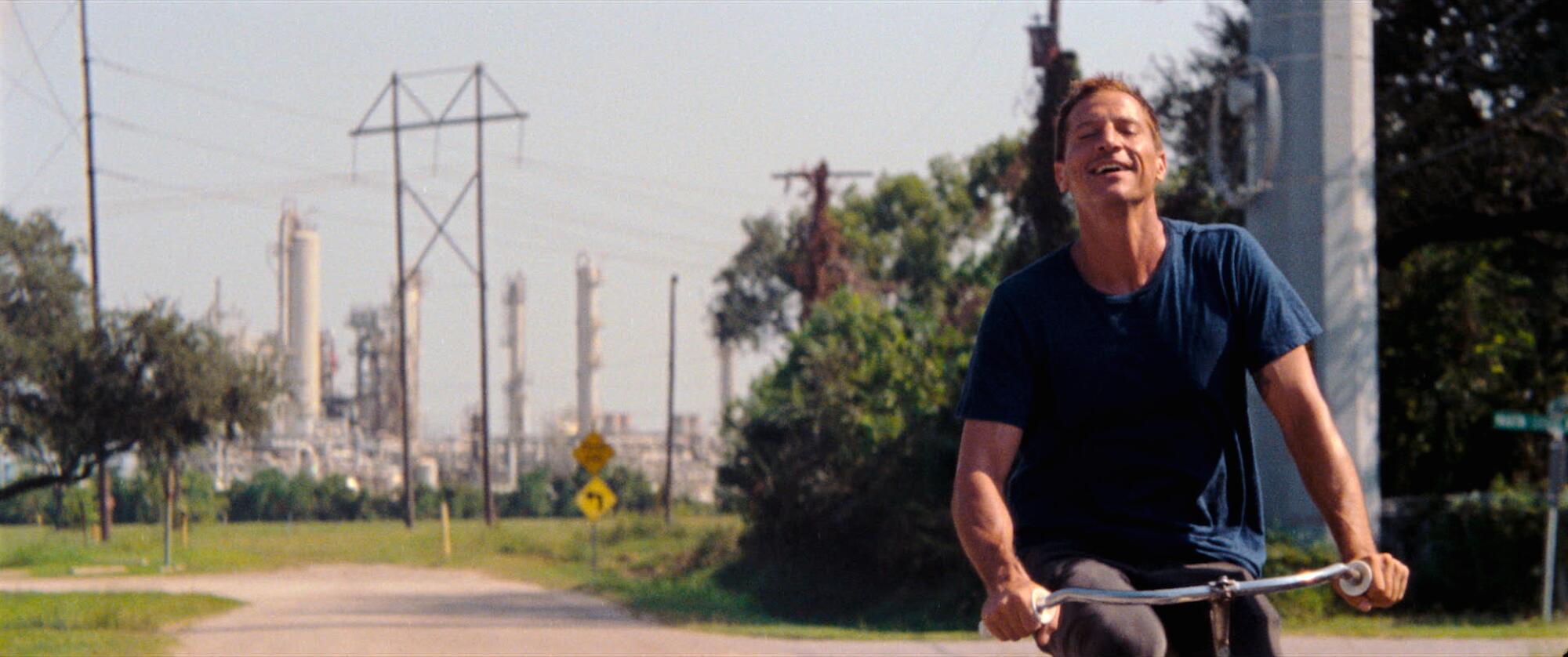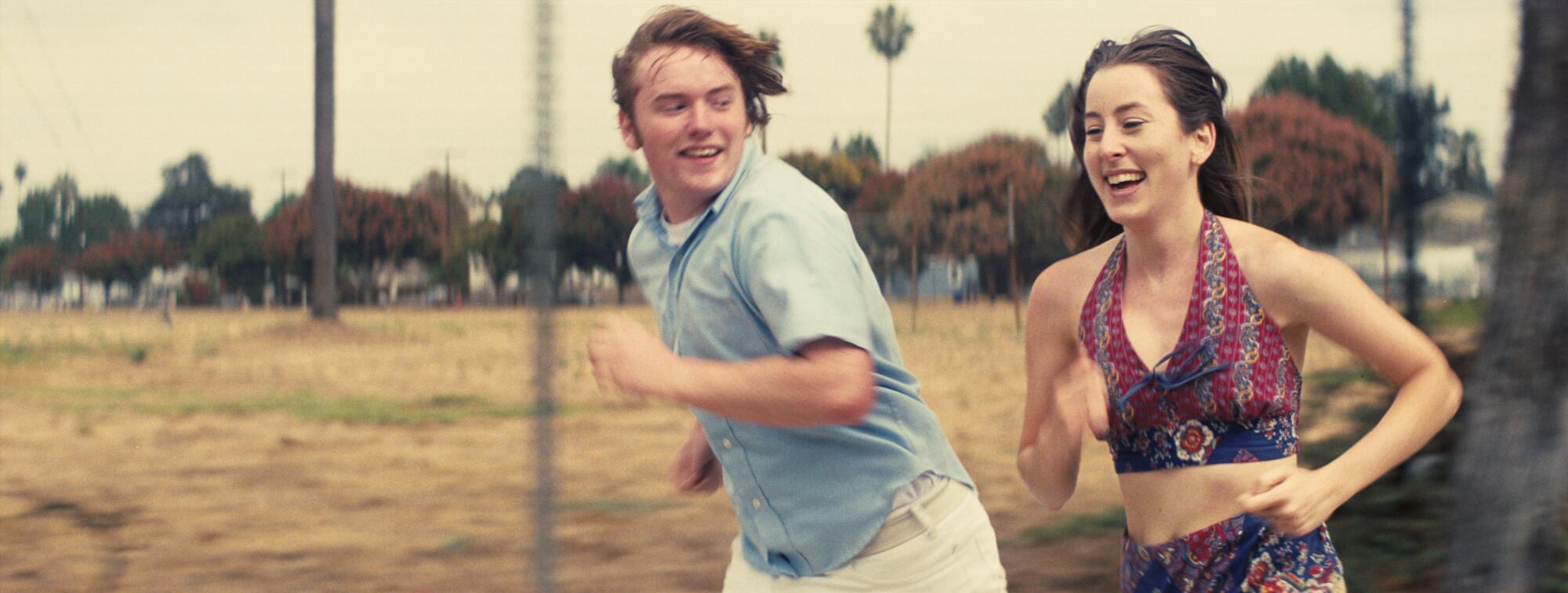
- Share via
WHAT’S THE LAST movie you’ve seen? Not at home, but in a theater. A movie where you stood in line, bought a ticket and then walked in, wandered past the concession stand and did an immediate double take, wondering, “Am I hallucinating? Or is a small bucket of popcorn really going for $8 these days?”
I’m thinking your answer might be the same as mine. The last movie I watched in a multiplex was “Spider-Man: No Way Home,” which I saw on a recent Sunday afternoon with an audience of mostly families, including many with small children, little ones I’m guessing had not long ago learned how to walk. They most certainly knew how to talk.

Oscars 2022 Preview
Can this awards season be saved?
But that was OK, because this is a Marvel movie, the eighth live-action “Spider-Man” film and the ninth overall, which means that the movie’s volume is firmly set to 11 — loud enough to drown out the sounds of small children, any and all moviegoers munching their pricey popcorn, even a Fourth of July fireworks show, not to mention the voice in my head wondering why Spider-Man thinks he can heal Marvel supervillains through group therapy.
I was catching up with “Spider-Man: No Way Home” on the recommendation of some friends and because it’s the one movie people seem to be willing to leave their houses to see these days, making it both a unicorn and a hard-to-ignore best picture Oscar contender.
“It’s an incredible movie, and I think it should be nominated,” Sony Pictures Classics co-president Michael Barker told me recently. “It belongs there on merit and then, just the idea that, during a pandemic when everyone is encouraged not to go to a movie theater, people just say, ‘We’re going anyway. We’ve got to see this movie.’”
That thought — we’re going anyway, we’ve got to see this movie — summed up the early portion of this strange, anxiety-ridden awards season. Only, for the most part, the people saying these words have been the privileged folks attending film festivals in tony places like Telluride and the members of various Hollywood guilds, voters presumably eager to get out of the house and fulfill their civic duty and maybe get a free drink or two and some fancy appetizers in the bargain.
“It’s a miracle we’re here,” Telluride Film Festival Executive Director Julie Huntsinger said way back when, welcoming audiences on the event’s opening day in September. “Every minute from now on is gravy.”
When Huntsinger said that, I was sitting in a theater, wearing a mask, surrounded by people who had to show their vaccination cards in order to attend the festival. And it was easy to imagine then that the gravy would be flowing like a river for the next few months and that the coming festival and awards season would unfold like the lyrics of the old country-folk song “Big Rock Candy Mountain” (you might know it from the opening credits of the Coen brothers’ classic “O Brother, Where Art Thou?”), and that there’d be a “lake of stew and of whiskey too” and things would be returning to normal or as close as we can get these days.
Like at any film festival, I saw some films at Telluride that I thought might catch on with savvy, adventurous moviegoers but wouldn’t be universally loved (Sean Baker’s “Red Rocket” with the extraordinary Simon Rex, and “Spencer,” which reimagines Princess Diana’s clash with the royals as a horror story). And then there were movies like “King Richard” and “Belfast,” crowd-pleasers I could recommend to my in-laws and still be invited over for the holidays without repercussions.

But as I’ve written before — and you have often pointed out to me in emails — it’s hard to call a movie a crowd-pleaser when the crowds don’t show. Older moviegoers — the demographic that often drives these nonspandex superhero movies at the box office — have continued to sit things out. (Understandably so.) And younger people have passed, too, even largely ignoring presumed enticements like Lady Gaga’s committed, campy, accent-forward turn in “House of Gucci.”
So the Oscars, scheduled for March 27, with nominations announced on Feb. 8, are once again shaping up to be a celebration of an art form that once dominated the popular culture but is now besieged on multiple fronts. If people can’t work up the interest to go see Steven Spielberg’s “West Side Story” remake or Oscar-winning director Guillermo del Toro’s “Nightmare Alley,” his follow-up to his 2017 best picture winner, “The Shape of Water,” why would they tune in to watch the Academy Awards? Particularly since, outside of football and, I don’t know, Oprah interviewing Prince Harry and Meghan Markle, no one watches live TV anymore.
And, sure, maybe people are catching movies on streaming platforms. Netflix’s “The Power of the Dog” has won numerous critics prizes and generated a fair amount of conversation over Kodi Smit-McPhee’s character arc. Perhaps the Williams tennis family coming-of-age drama “King Richard” found an audience when it ran on HBO Max, though, frustratingly, it’s currently not on that service.
But it’s not the same. It just isn’t. And inevitably, nearly every conversation I’ve had with filmmakers and studio execs and actors these past few months has revolved around the sense that people know that you lose something watching a movie at home and not with an audience at a movie theater — and they simply don’t care. The trade-off — the hassle, the risk, the $8 popcorn — isn’t worth it. People want to be in control of their own environment, even if it diminishes the experience and dulls the senses.
Yet, there are flashes of hope, signs that all isn’t lost just yet. In early December, before the Omicron surge, I led a conversation with filmmaker Paul Thomas Anderson and Alana Haim, star of Anderson’s celebrated new movie, “Licorice Pizza.” The film had been playing at the 1,400-seat Village Theatre in Westwood since Thanksgiving, often selling out that cavernous auditorium. The Q&A was announced at the last minute; it was intended as a thank-you to fans who’d been filling this historic theater.

Sitting in the front next to Haim and Anderson, it was difficult not to lose focus and simply gaze out into this sea of hundreds of (masked) faces. It was the most people I’d been in a room with for two years. And they were all there for one reason: to see a great movie.
Anderson sent me a text the next day, marveling at the energy in the room. Still giddy, I responded, “Let’s do it again sometime.” And by “sometime,” I was thinking in my head, “tonight.” It had been so long since I felt that kind of movie love. What I wouldn’t give right now to feel it again.
More to Read
From the Oscars to the Emmys.
Get the Envelope newsletter for exclusive awards season coverage, behind-the-scenes stories from the Envelope podcast and columnist Glenn Whipp’s must-read analysis.
You may occasionally receive promotional content from the Los Angeles Times.











